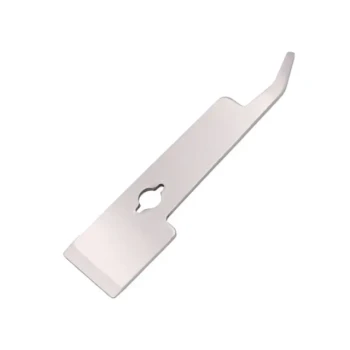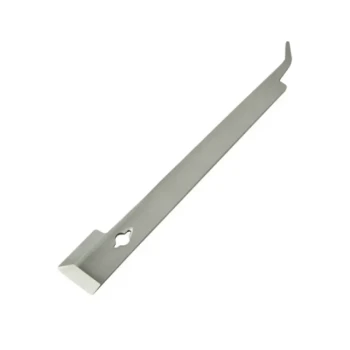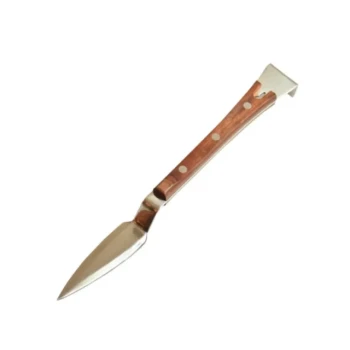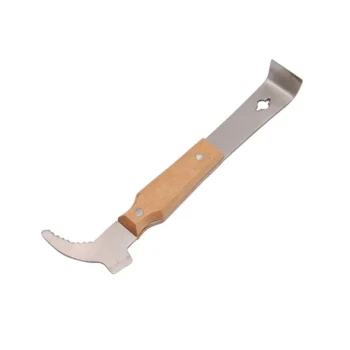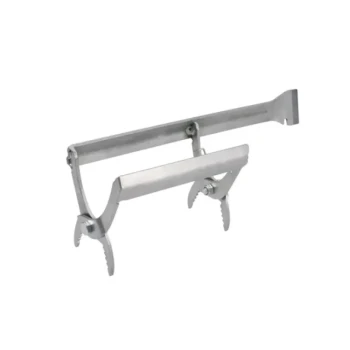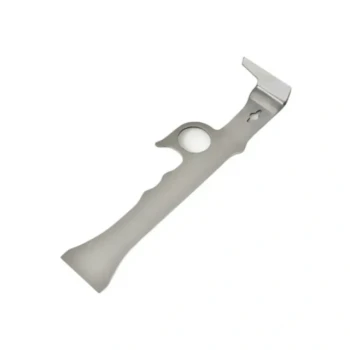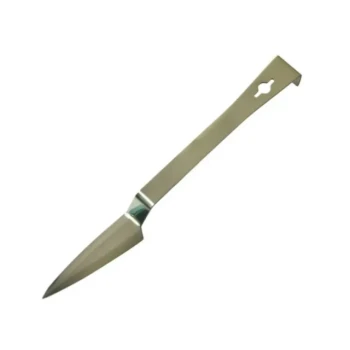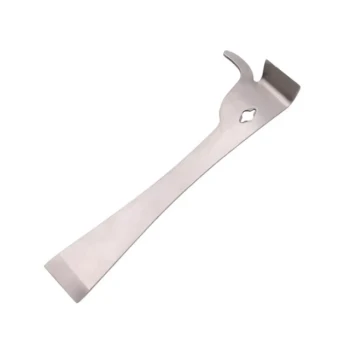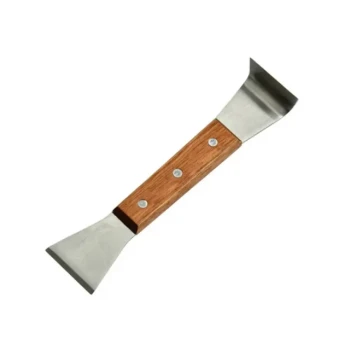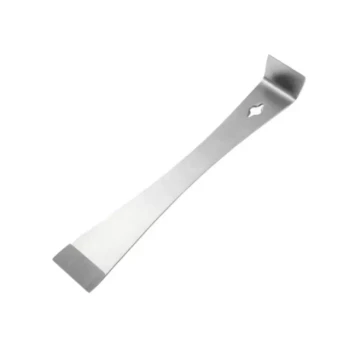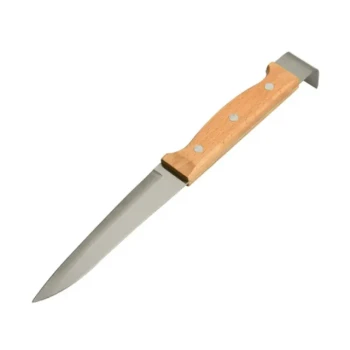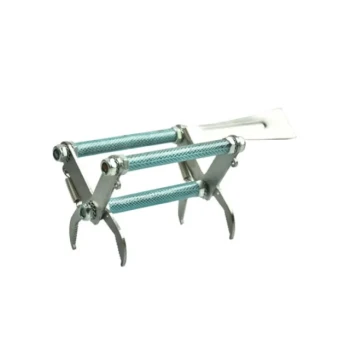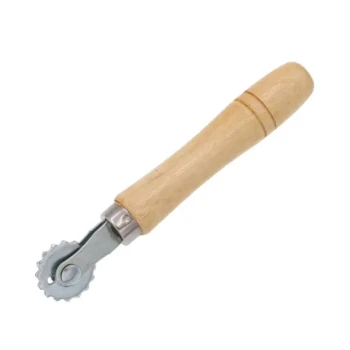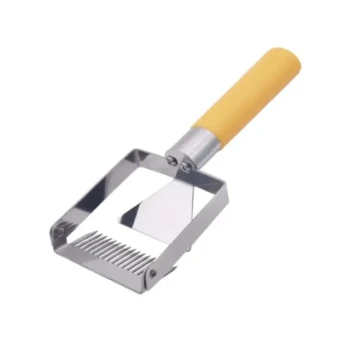Beekeepers know that the right tools can make or break hive management. Among the essentials, the J-hook hive tool stands out for its precision and versatility—but not all J-hooks are created equal. Whether you're a commercial beekeeper or a hobbyist, selecting the right color-coded tool (red or orange) impacts durability, ergonomics, and cost-effectiveness. This guide breaks down the key differences, material properties, and ideal use cases to help you invest wisely.
J-Hook Hive Tool Essentials
Anatomy and Key Design Features
The J-hook hive tool is a stainless steel instrument, typically around 10.5 inches long, with a thin hooked end. Unlike standard hive tools, its design excels at:
- Frame extraction: The hook slides easily under frame edges, reducing hive disruption.
- Prying propolis: The flat end scrapes hive components cleanly.
- Leverage-intensive tasks: The extended length provides better torque for stubborn frames.
Why Leverage Matters in Hive Management
Research shows that tools with optimized leverage reduce repetitive strain by up to 30% during hive inspections. The J-hook’s length and hook angle minimize the force needed to separate glued frames, a common pain point in Langstroth hives.
Red vs. Orange: A Detailed Comparison
Material Strength and Durability Differences
- Red J-hook tools use a higher-grade stainless steel alloy, offering superior resistance to bending under heavy use. Ideal for commercial apiaries inspecting hundreds of hives weekly.
- Orange J-hook tools are slightly softer but more affordable, suitable for hobbyists or occasional use.
Handle Width Impact on Frame Extraction
- Red tools often feature wider handles (1.5–2 inches), distributing grip pressure for comfort during prolonged use.
- Orange tools have narrower handles (1–1.25 inches), preferred for beekeepers with smaller hands or lighter workloads.
Cost vs. Longevity Trade-offs
While red tools cost about 20–30% more upfront, their lifespan can exceed orange tools by 2–3 years under heavy use. For low-frequency beekeepers, the orange variant delivers sufficient value.
Matching Tools to Your Beekeeping Style
Recommendations for Heavy-Duty vs. Occasional Use
- Commercial beekeepers: Opt for red tools—their durability justifies the investment.
- Backyard beekeepers: Orange tools provide adequate performance for
Compatibility with Hive Types
Both tools work across Langstroth, Warre, and Top-Bar hives, but:
- Langstroth users benefit most from the J-hook’s frame-prying precision.
- Warre/Top-Bar keepers may prioritize cost savings (orange) since frame manipulation is less frequent.
Pro Tips for Maintenance and Longevity
Preventing Rust and Handle Wear
- Clean after use: Wipe with a dry cloth to remove propolis and moisture.
- Oil occasionally: Food-grade mineral oil prevents stainless steel corrosion.
When to Replace Your J-Hook Tool
Signs it’s time for a new tool:
- Visible bending or hook deformation (red tools resist this longer).
- Rust pits compromising structural integrity (rare with stainless steel but possible in humid climates).
Ready to upgrade your hive toolkit? HONESTBEE’s wholesale-focused inventory offers red and orange J-hook tools tailored to your operation’s scale—ensuring durability for commercial apiaries and affordability for distributors. Explore options today and keep your hives running smoothly.
Visual Guide
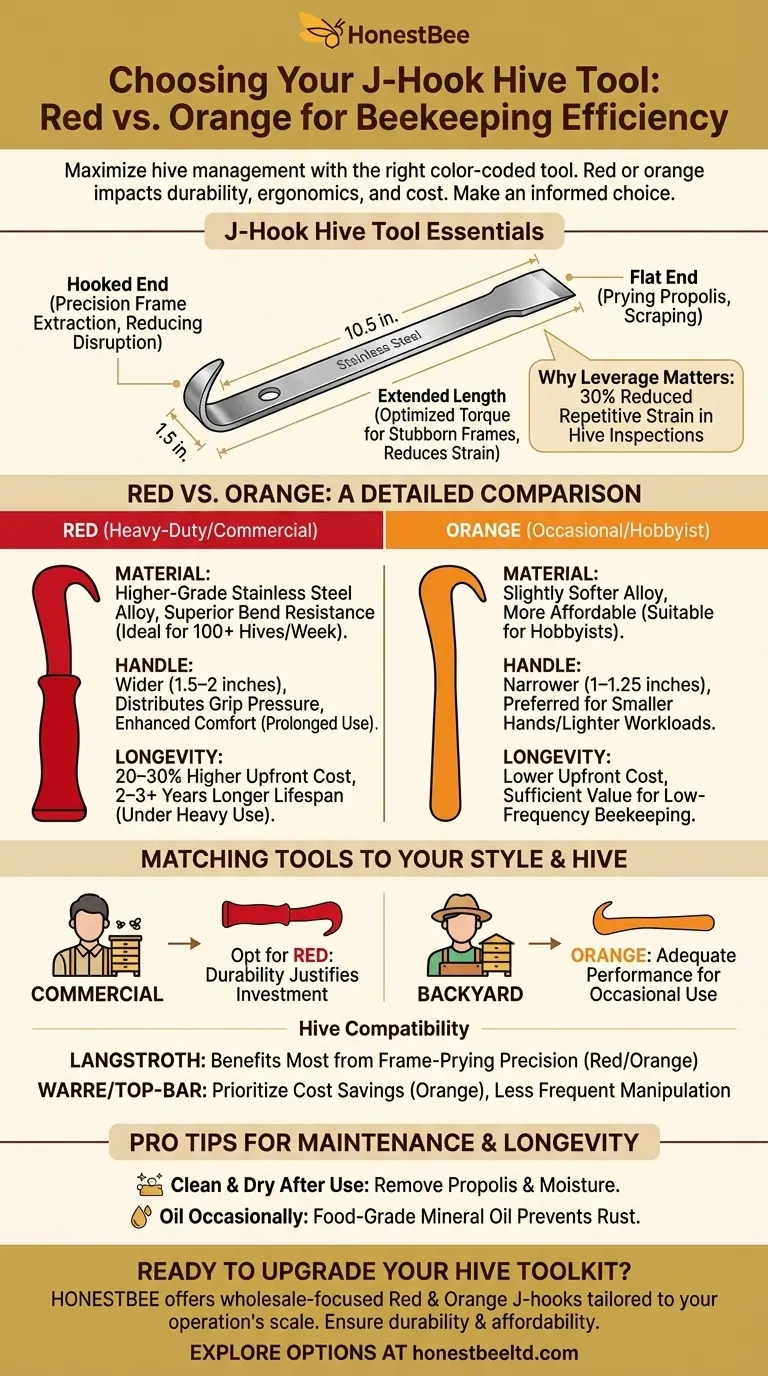
Related Products
- HONESTBEE Professional Mini J-Hook Hive Tool for Beekeeping
- Stainless Steel J Hook Hive Tool for Beekeeping
- HONESTBEE Premium Italian Style Hive Tool with Hardwood Handle
- HONESTBEE Professional Multi-Functional Hive Tool with Ergonomic Wood Handle
- Multi-Function Plier-Style Frame Grip Hive Tool
Related Articles
- How to Uncap Honeycomb Safely: Professional Methods for Maximum Yield and Wax Preservation
- The Beekeeper's Strategic Guide to Queen Catchers: Hive Management & Safety
- Strategic Entrance Reducer Management: From Hive Defense to Colony Growth Optimization
- How Bee Space Dictates Hive Success: Science-Backed Management Strategies
- How to Choose the Right Hive Tool for Your Beekeeping Needs

